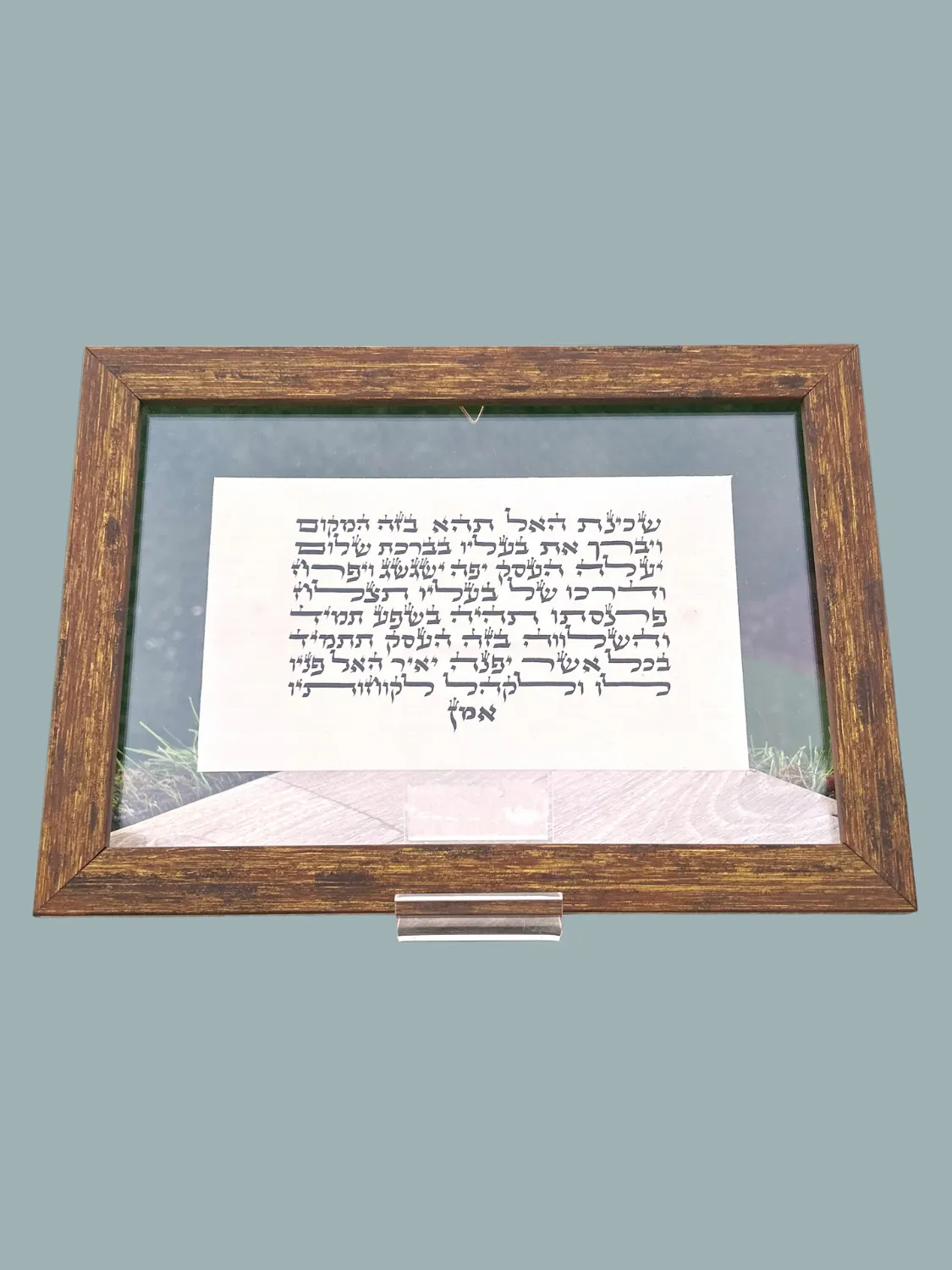
Blessing for Business
The notion of a “Blessing for Business” (“Birkhat Ha Esek”) reaches back to Temple times.
In Mishnah Tamid, the Levites recited prayers before Temple service.
After the destruction of the Second Temple (70 CE), rabbis re‑purposed these for everyday labor. The Talmud (Bava Metzia 71a) records Rabban Gamliel’s blessing that a craftsman uttered before commencing his trade. By Geonic times (7th–11th centuries), Siddur Rav Amram Gaon included a “Birkhat HaSanton” for artisans.
Historical Origins
The Birkat HaEsek (בִּרְכַּת הָעֵסֶק), “Blessing for the Business,” evolved as part of the broader genre of Birkat HaBayit (Blessing for the Home), which communities inscribed on doorposts and walls to invite peace and protection into domestic life.
Though the Talmud does not record a specific “business blessing,” by the medieval period, various localized customs had emerged alongside home‑blessings, adapting traditional formulas to commercial contexts.
On wall‑hangings in Jewish homes of the 17th and 18th centuries, craftsmen would add petitions for shopkeepers and artisans, wishing their enterprises prosperity alongside household well‑being.
In Israel, the modern Birkat HaBayit plaques often include a distinct section labeled Birkat HaEsek, testifying to its popularization in 20th‑century Zionist culture.
Text & Structure
1. Invocation of Divine Sovereignty
“בָּרוּךְ אַתָּה ה’ אֱלֹהֵינוּ מֶלֶךְ הָעוֹלָם,
(“Blessed are You, Lord our God, King of the universe,”)
2. Petition for Abundance and Success
“שֶׁיִּתְבָּרֵךְ הָעֵסֶק הַזֶּה בְּשֶׁפַע פַּרְנָסָה וְהַצְלָחָה…”
(“…that this business be blessed with abundant livelihood and success…”)
3. Appeal for Ethical Conduct and Peace
“…וְשָׁלוֹם יִהְיֶה בְּתוֹכוֹ בֵּין לִשְׁוָאָה לְאָחִיות וּלְיֹשֶׁר בְּפָעֳלוֹ.”
(“…and may there be peace within it, fairness among partners, and honesty in its dealings.”)
This three‑part structure mirrors the tripartite pattern of many Jewish blessings—praise, petition, and aspiration—rooting commercial activity in a framework of sanctity and morality.
History, Culture, & Ritual Usage
Sanctifying Commerce: In an era when Jewish communities frequently depended on small‑scale trade, reciting or displaying Birkat HaEsek affirmed that livelihood was not merely a secular pursuit but a divine partnership. Hashem as man's partner, in business as well as life.
Community Identity: Jewish merchants traveling along trade routes would carry small plaques or handwritten petitions of Birkat HaEsek, akin to talismans, signifying both piety and shared cultural practice.
Modern Revival: With the founding of the State of Israel, there was a renaissance of Hebrew typography and decorative arts, leading to a proliferation of Birkat HaEsek wall‑hangings crafted in Jerusalem and Safed workshops. These pieces combined traditional text with contemporary design, cementing the blessing’s role in modern Jewish homes and offices
At Inauguration of a Business
Owners often recite the blessing at an opening ceremony, inviting family, friends, and a rabbinic figure to join in the communal petition.
Daily or Weekly Recitation
Some pious merchants pause each morning to recite a personal version of Birkat HaEsek before opening their shop.
Inscription in the Workspace
Hanging the blessing near the entrance, cash register, or office doorway serves as a constant reminder of the ethical obligations underpinning commerce.